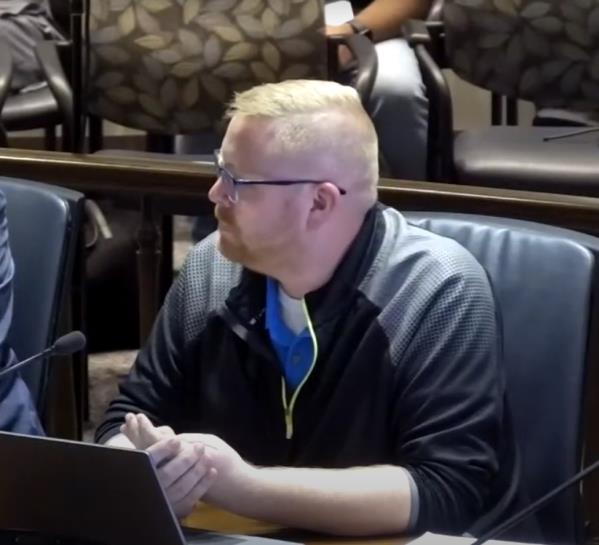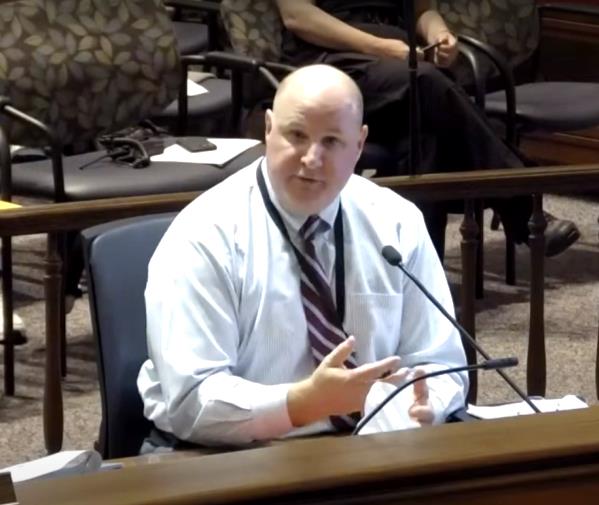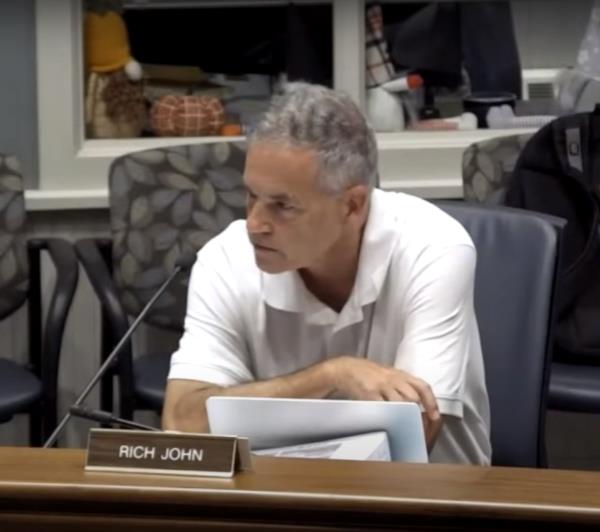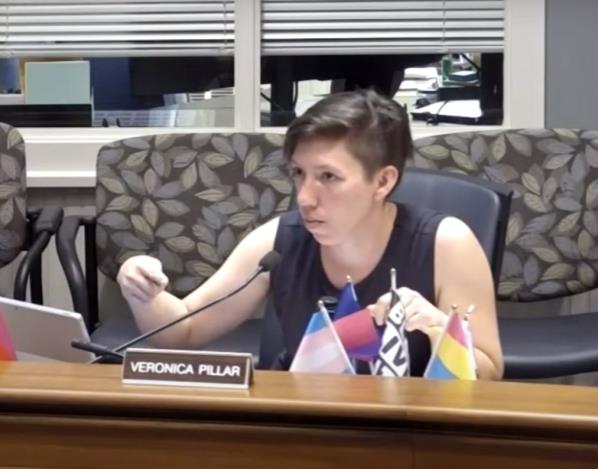Towns could pay half the cost for countywide rescue service, officials disclose
by Robert Lynch; October 4, 2023
Tompkins County officials attempted Tuesday to answer the question that drew the greatest concern at a testy Public Hearing in Newfield last week. It concerned the local cost of a proposed governmental remedy to the long wait times rural residents must endure when they seek emergency medical care.

But the answer officials offered Tuesday may not placate the critics who faulted the proposed Countywide Rapid Medical Response Service as costing too much and helping too little. Their complaints may continue because it’s ever-more-likely that Tompkins County’s service will be anything but free for the rural town taxpayer.
As detailed for the first time before the Tompkins County Legislature Tuesday, four of the five “cost-sharing” models advanced for the service would assess the rural towns—some or all of them—by up to $58,000 annually for the Rapid Response Service, better known as the “flycar system.” As proposed, the service would position SUV’s and EMT’s around the county to race to medical calls during daytime hours only. It’s designed to supplement local fire department rescue squads, not to replace them.
Three of the cost-sharing options would charge most rural towns, including Enfield and Newfield, 50 per cent of the operational expense. Only one of the five choices—and the one least likely to gain legislators’ support—would have Tompkins County provide municipalities the service for free.
“These five models are… not perfect,” Joe Milliman, Tompkins County’s Emergency Services Coordinator, acknowledged to the Legislature. They’re “really just to kind of get the discussion going of where we could look at some cost-sharing initiatives,” he said.
It was Milliman who drew verbal incoming fire for some 40 minutes in Newfield last Thursday as its town’s residents and Newfield Town Board members peppered him with questions, all of them critical. It came at a time before the County had fleshed out its various funding options.
“That initiative emerged battered and torn after that grilling,” this writer, Enfield Councilperson Robert Lynch, reported to the County Legislature at a Public Hearing that began Tuesday’s meeting. Lynch spoke at a hearing that addressed the Rapid Medical Response Service as part of a “Shared Services” initiative for which the service plays a key part. “As I have said, and as I have observed, this report, this initiative is not ready for Prime Time,” I stated.
And indeed, that lack of completion; the absence of forethought, continued Tuesday as Milliman and Michael Stitley, Tompkins County’s Director of Emergency Response, detailed the various cost-sharing options to the Legislature. At times, an observer could sense the choices were scripted no more than ten minutes ahead of the meeting. Stitley found himself apologizing to legislators for imprecise details or unknown facts. “I just feel like I haven’t necessarily hit on the mark,” Stitley said as he closed his 40-minute presentation.

Because of that imprecision, expect the five, initially-stated options to evolve over time. Some of them may have been discarded already. But as they came to the Legislature Tuesday, three of the five would force rural towns to share half the estimated $700 Thousand annual cost of the service. Under one model, all eight (or nine) rural towns would pay equal amounts, $38,877 per year. Under another option, local towns would pay based on the number of fire service rescue services stationed in their municipality. Enfield and Newfield, each with only one, would pay $29,158 each. But Danby, with two such departments, would pay double. And Caroline, with three, would pay more than $87,000. Dryden’s annual bill would top $100 Grand.
For Enfield, the most costly choice would arise from Option 3, one that would exclude from assessment towns like Ulysses and Dryden that each have home-based ambulance services. The argument supporting that costly choice to Enfield is that a town with a paid ambulance corps has less need for the County flycar.
The fourth, less expensive, choice would have Tompkins County pay 75 per cent of the Rapid Response Service’s expense, with each town assessed an equal $19,438. Under the fifth and final choice, Tompkins County would pay the full expense of the service.
In none of the funding models, however, would the City of Ithaca be charged a penny. Officials argue that the City should not be assessed because, at least in theory, it would receive no benefit, since paid firefighters already handle rescue work.
In one of those unscripted moments revealing a lack of preparation, Stitley said he’d have to clarify the Town of Ithaca’s standing in the matter. He and his staff may not have been aware that the Ithaca Town contracts with the City for rescue services and would likewise stand exempt.
“None of the data that we’re sharing today is in any way, shape or form to disparage our community-based services,” Stitley told legislators. It’s intended, instead, he said, to “help them.” And the Director added, “I do truly believe a program like that will help decompress some of the responsibilities they have especially during the day.”
The Countywide Rapid Medical Response Service, in County governmental planning stages for the past year, is designed to meet a perceived shortage of volunteer EMT’s and first responders within rural departments during peak daytime hours when many of them may be at work. The system, as now proposed, would position each of three County-purchased SUV’s, “flycars,” each staffed with one EMT, at specific locations designed to triangulate Tompkins County. Paid EMT’s would staff the service 12 hours daily, Monday through Friday. On nights and weekends, volunteers would still shoulder the task.
At least two County legislators, Greg Mezey and Rich John, spoke Tuesday in favor of having rural municipalities share the operational costs.
The rural towns “is where the benefit will be received, and it will save lives in those communities,” John said. “I believe having a reasonable cost share is absolutely reasonable and vital to make this whole thing work financially.”

Rich John declined to pick a favorite funding option, acknowledging “the devil’s in the details.”
Legislature Chair Shawna Black signaled her support, as did her Vice-Chair, Danby’s Dan Klein.
“I know there’s some consternation being expressed about the cost and if this can really work,” Klein said, likely referring to the icy reception I’d reported Newfield’s having given the plan. “I really am hoping we can take a little bit of a leap of faith in this because there is no Plan B,” Klein remarked.
But perhaps the meeting’s most telling observation came from City of Ithaca legislator Veronica Pillar, who pointed out that at least one of the pricing plans—that to assess towns proportionate to their rescue squad presence—could actually de-incentivize the kinds of volunteer efforts whose service the County flycar system is intended to supplement in the first place.
“So it looks here like if you already have a rescue, then you’re going to pay more for this service,” Pillar observed. “But it would seem like if you already have a rescue… you would get less value from the service, than if you don’t. So what am I missing?’
Veronica wasn’t missing anything, of course, except, perhaps, that someone hadn’t done his homework. The Department of Emergency Response’s presentation given the Tompkins County Legislature that night clearly suffered from lack of forethought. Staffers had clearly rushed something to the floor before giving it the brainpower it deserved.

By the way, missed emergency call rates for rescue services about Tompkins County vary wildly. Enfield’s is among the lowest, just 11 out of 120 (9%) for the year-to-date; though in terms of minutes, its average response time stands among the longest. In some people’s minds, the current funding models provide little or no benefit for good performance. In fact, they could work just the opposite.
“I think that with the County sitting on the fund balances that it’s sitting on, and with the towns struggling as they are, I think we’ve got to have a different plan, a County-supported plan, totally County-supported, for this flycar system,” this writer told the Legislature in his Public Hearing comments that night.
Next Wednesday, October 11th, the Town of Enfield has scheduled its own Public Hearing on the Shared Services Plan and its call for a Rapid Medical Response Service. Emergency Response representatives will be invited. This controversial plan’s next crucial chapter could be written then.
###

